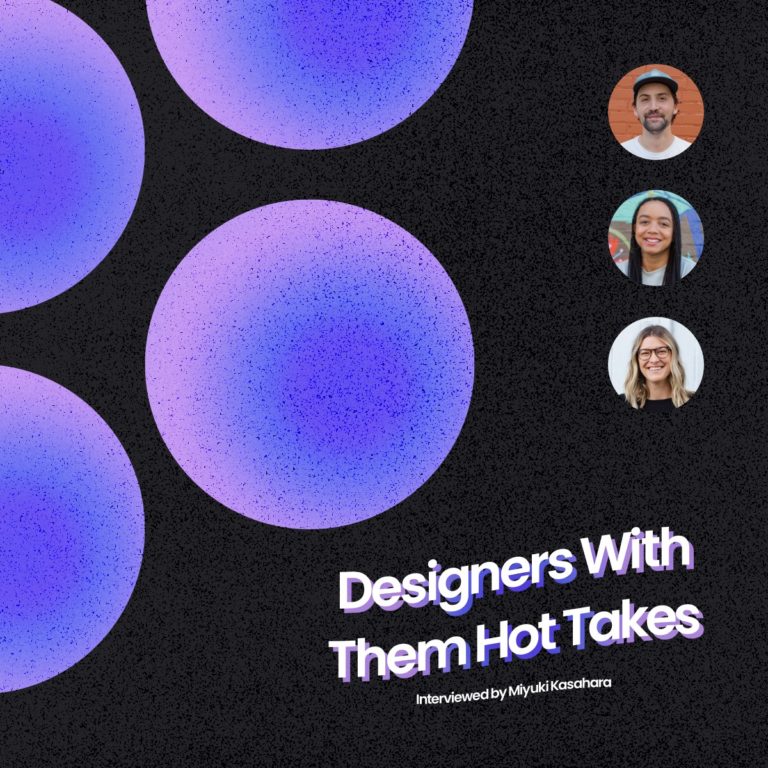
February 2024
Black Influences in Graphic Design: My Search for a Black Design Aesthetic.
Researched & Written by Designer Dom Phyall.
When I began my journey in the design field, I didn’t initially consider drawing inspiration from the styles and expressions of those with African heritage. The legacy of Black designers remains largely unrecognized and as one of few Black faces in the industry, I’ve become acutely aware of this absence. Such realizations could prompt designers of color like myself to feel like outsiders, potentially leading us to emulate more widely accepted, mainstream—often Eurocentric—design aesthetics. It’s an unfortunate truth I’ve come to acknowledge. While I appreciate various design influences regardless of their roots, I’m now actively seeking the foundational elements of a distinctively Black aesthetic. From exploring the rhythmic vibrancy of the Jazz Age to embracing the innovative spirit of contemporary hip-hop, this blog will document my discoveries and celebrate the trailblazing Black artists and designers who paved the way.
Aaron Douglas: The Artistic Luminary of the New Negro Movement in the Roaring Twenties
During the 1920s, the distinction between artist and designer remained indistinct. A significant number of journals and magazines owned by the African-American community not only served as publications but also as repositories for designs inspired by African aesthetics. As the Harlem Renaissance flourished, a profound impact was made on the world of graphic design by the New Negro Movement. The popularity of Jazz, with its dynamic and evocative rhythms, undoubtedly served as a precursor to African-American-inspired graphic design principles. This era saw African-American designers infuse traditional artistic motifs with the vibrant, syncopated rhythms of jazz, giving birth to a unique visual language that resonated deeply with the Black experience. Striking typographies, bold colors, and African-inspired symbols became emblematic of the movement, which aimed to redefine how African Americans were perceived and how they perceived themselves. Artworks and posters of the time reflected a newfound cultural pride, not only through content but also through the styles and techniques used. This intersection of culture and design during the 1920s was an indicator of the power of graphic arts in shaping identity, a legacy still evident in current practices within the African-American artistic community.

Among these pioneering individuals was a young black artist and illustrator, Aaron Douglas, who significantly drew upon the artistic heritage of his African ancestors. His work played a pivotal role in the evolution and leadership of the burgeoning New Negro Movement, influencing both art and design. Aaron Douglas successfully fused the vibrant graphic design style that intertwined African art with Cubism, introducing it to a world that was eager for visual innovation beyond traditional Victorian imagery. His work didn’t just influence the realm of fine arts; it seeped into broader visual culture, impacting graphic design, book covers, magazine illustrations, and more. This diffusion of his visual style helped solidify the look of the era, marking the Harlem Renaissance as a time of creative revolution and rebirth that left an indelible mark on American and African American culture.
Uncovering the remarkable black motifs of a past time brought immense fulfillment, resonating deeply with me. In these antique designs, I recognized reflections of my personal style and the visual influences that have helped mold the art I create today.
1960s – 1970s: The Rise of Black Cultural Nationalism
During the tumultuous era of the 1960s and 1970s, a period deeply invested in the pursuit of civil rights and self-determination, there emerged a distinct movement known as Black Cultural Nationalism which deeply influenced the artistic expression within the African-American community. This dynamic cultural wave was not just an organic reappearance but a purposeful and emphatic proclamation of identity.

In the wake of the vibrant Black Cultural Nationalism movement, the realm of graphic design witnessed a transformative renaissance in the form of Afrocentric motifs and assertive typographic elements that mirrored the societal shift. AA graphic designers such as Emory Douglas, became a prominent figure of this era, using his craft as an extension of the movement’s spirit. His work not only reflected a nuanced cultural climate but also redefined the visual language of activism. His visuals played a pivotal role in communicating the political messages of organizations like the Black Panther Party, effectively shaping the aesthetic that would become synonymous with the black liberation movement, granting future generations of black graphic designers, like Makeba “KEEBS” Rainey, an enduring legacy of creativity rooted in cultural pride and political consciousness. They carry the torch forward, defining and affirming blackness in an evolving aesthetic dialogue, with each piece serving as a homage to the past while speaking directly to the complex realities of the present. These designs do not just decorate; they disrupt, engage, and challenge, much in the way Douglas’s work did, blending art and activism in a dance of purposeful and impactful creation.
This golden age of black graphic design continues to inspire contemporary design practices, reminding us of the indelible impact cultural movements can have on artistic innovation and identity expression. Emory Douglas’s legacy is a testament to the power of graphic design as a means of social and political activism, laying groundwork that would influence future generations of artists and activists alike.
Do The Right Thing…..The 90’s “Movie Man”
Let’s paint a picture: the setting is the 1990s—a period that resonates strongly with me! I’m deep into exploring the nostalgic elements that left their mark on me in my early years. My exploration has led me through the memorable movie posters that didn’t just reshape Black culture, but also profoundly impacted what I see as the golden era of hip hop—an epoch that holds significant personal meaning to me –– an era that resonates with me deeply.

Before embarking on this exploration, the name Art Sims might have slipped under the radar in conversations about impactful graphic designers. Art Sims, often referred to as “The Movie Man,” curated a design landscape that resonated with the energy of urban life and the burgeoning hip-hop culture. Sims hails from the motor city of Detroit and was nurtured amid the iconic tunes of Motown. As a graphic designer and art director, Sims has carved out his reputation as one of the most exceptional designers in the entertainment industry. In an era when hip-hop began to dominate the airwaves, his work on film posters, particularly for Spike Lee’s acclaimed movies like “Do the Right Thing” and “Mo’ Better Blues, were significant in laying down the roots of a distinctively hip-hop-infused style, with the rhythm of the streets.

Sims’ influence extended far beyond the immediate visual impact of his work; he touched the pulse of a generation seeking representation and identity within mainstream media. His designs were not just pictures; they were statements of cultural affirmation, a visual language that echoed the assertive and dynamic nature of the time. By integrating elements of graffiti, vibrant color palettes, and bold typography, Sims effectively communicated the essence of the black experience and the hip-hop culture to a broader audience. His visual creations did more than just promote films; they embodied the essence of Black culture, seizing the spirit of the 1990s and establishing his position as a pivotal channel for cultural articulation.
Art Sims played a pivotal role in reshaping the narrative of Black graphic design. Their efforts have ensured that the rich diversity and intricate nuances of Black culture are reflected in a domain that historically has predominantly featured a singular perspective.

So Where Are All The Black Designers Today?
Continuing this upward trajectory, today’s Black graphic designers are not just participants in the field but are leading voices defining contemporary aesthetics. Fueled by the surge in technological progress and the widespread availability of digital resources, Black designers have been making headway, not merely establishing their presence in the graphic design sector, but also crafting influential cultural storylines and originating styles that have a worldwide impact. These talented individuals are taking advantage of platforms like Instagram, Behance, and Dribbble to exhibit their work, connect with diverse audiences, and push boundaries within the industry. But are these platforms for showing off our work really the spaces to support and cultivate our talents? Why is the recent movement “Where are all the Black Designers?” resonate so deeply with me and many others? Yes, we have come a long way, but in an industry that remains predominantly non-Black, there are ongoing challenges related to visibility, access, and equal opportunity. Do we need to advocate for more education and research on the black designers of the past? Will that allow for us to move with more pride and confidence when entering this field of design? It reminds me of a quote my Mom always would say, “If you know where you come from, there are no limitations on where you can go.”
These struggles for recognition and representation underscore the importance of advocacy, education, and community-building. That’s why doing this research on those that paved the way was so important to not only me, but the others in my community that might have been feeling the same. The “Where are all the Black Designers?” movement is not just a question—it’s a rallying cry for change. It reflects an undercurrent of dissatisfaction with tokenism and the inequities that persist in professional environments. Through our collective efforts and empowering initiatives, that include researching our history in the industry, we are creating networks that not only showcase Black creativity but also provide support systems that nurture Black talent. The discourse that we encourage today is one that questions the status quo, seeks to dismantle the barriers that exist, and paves the way for a more inclusive and fair design landscape—one where the next generation of Black designers can thrive without the need to question why they’ve been underrepresented for so long.
This journey began with a sincere thirst for knowledge, and it concluded with an overwhelming sense of pride in being among the select individuals in the field, as well as a deep appreciation for the trailblazers who laid the foundation. Crucially, through this process, I’ve cultivated an understanding of what constitutes a black design aesthetic and have come to recognize that it has been inherently a part of me from the start.
Stay curious.
Resources: National Gallery of Art, FastCompany, PRINT Magazine, Biography, CooperHewitt, Google Arts & Culture




